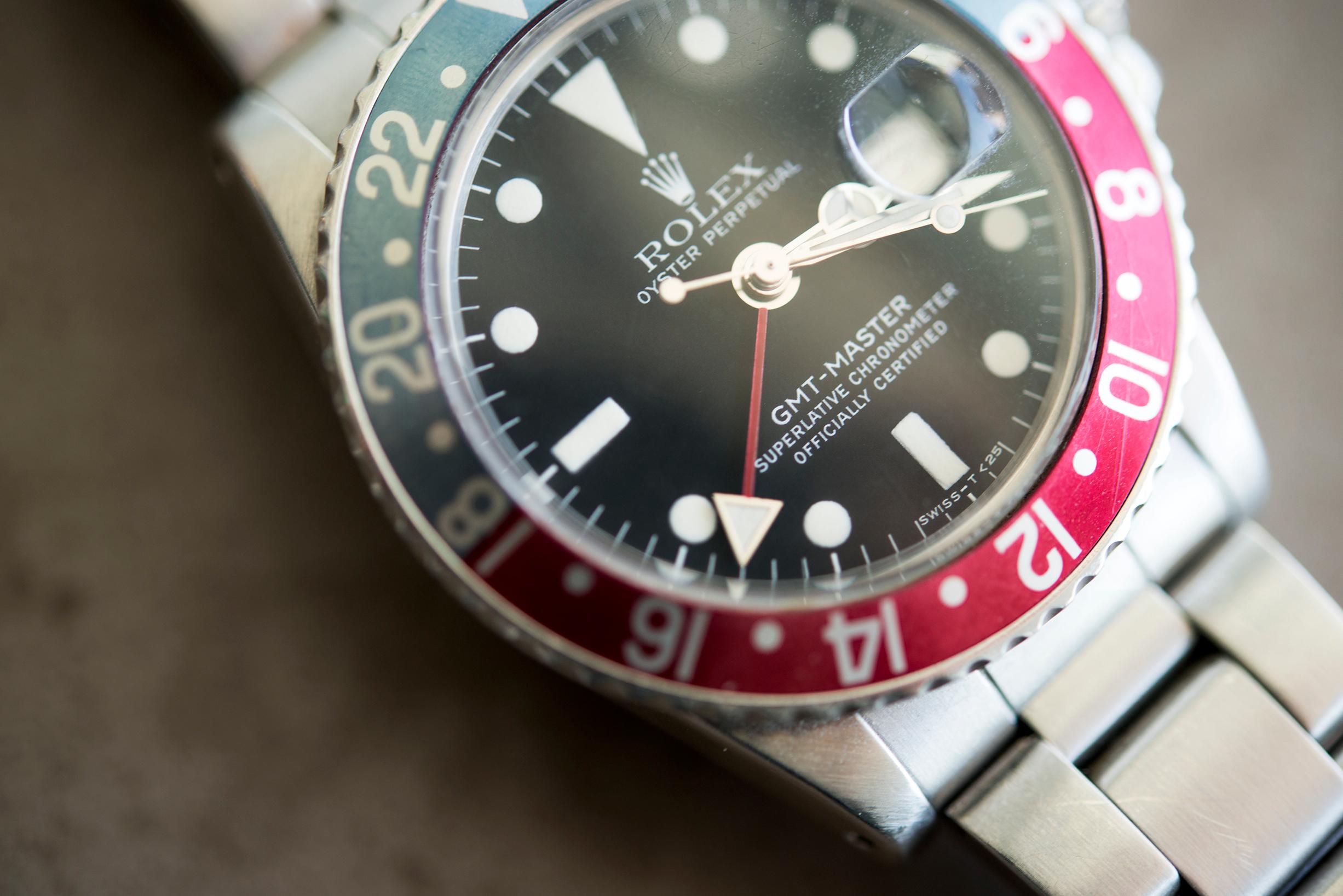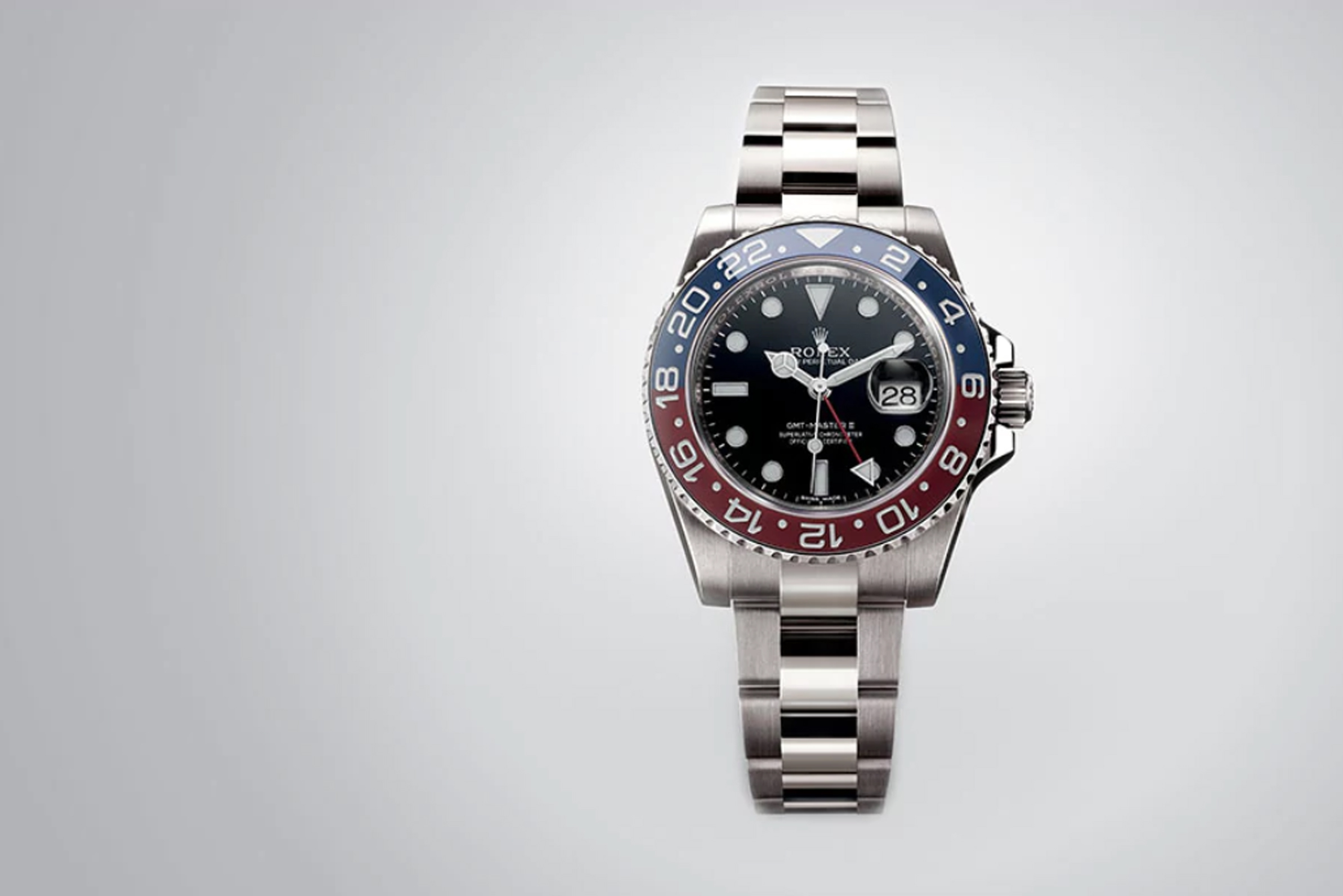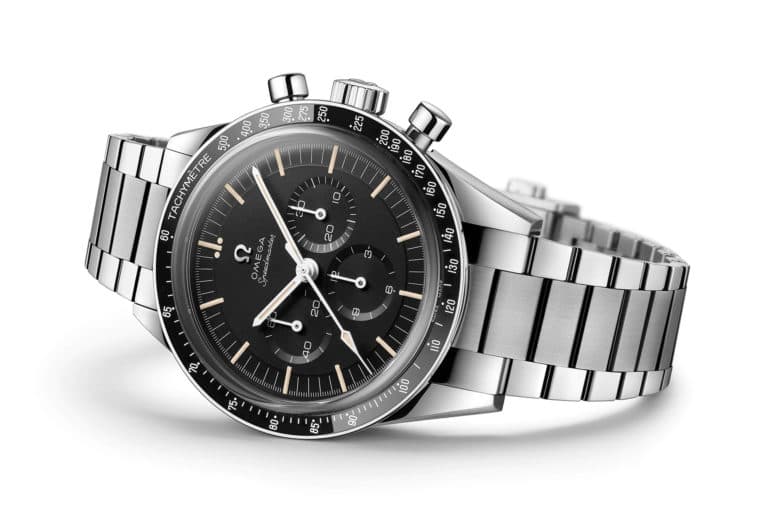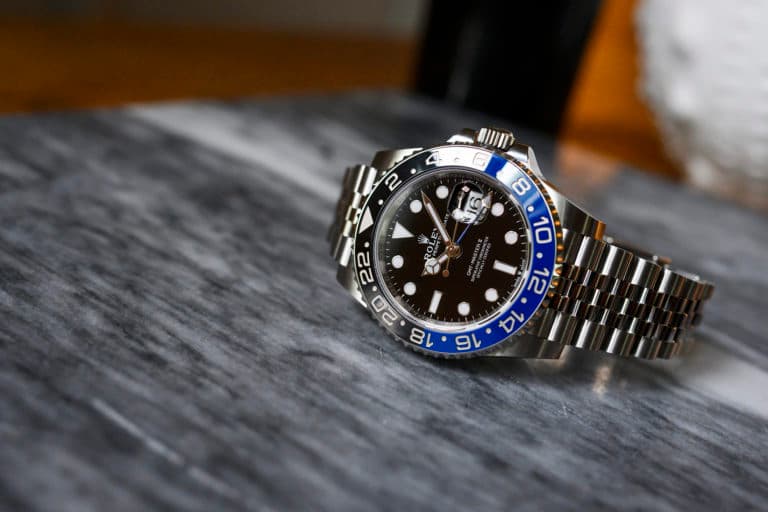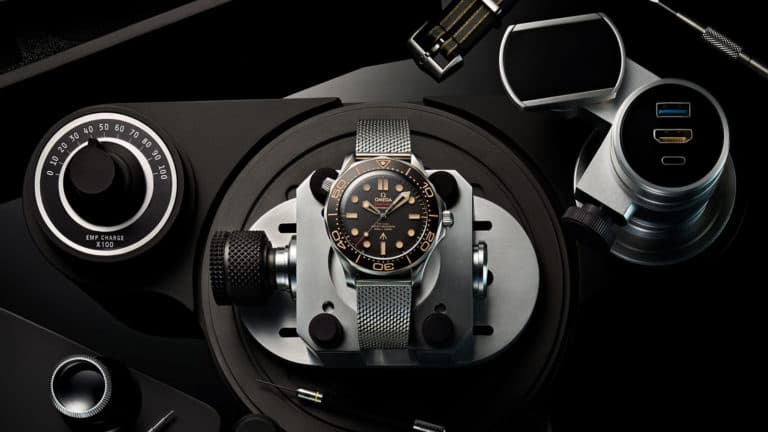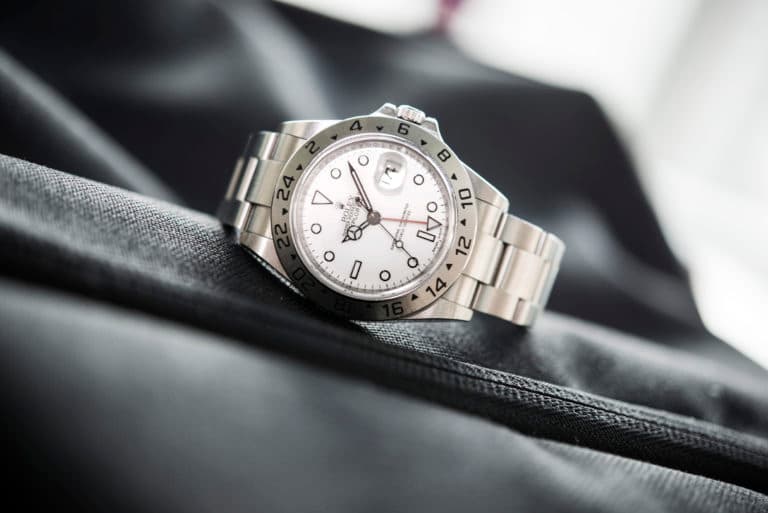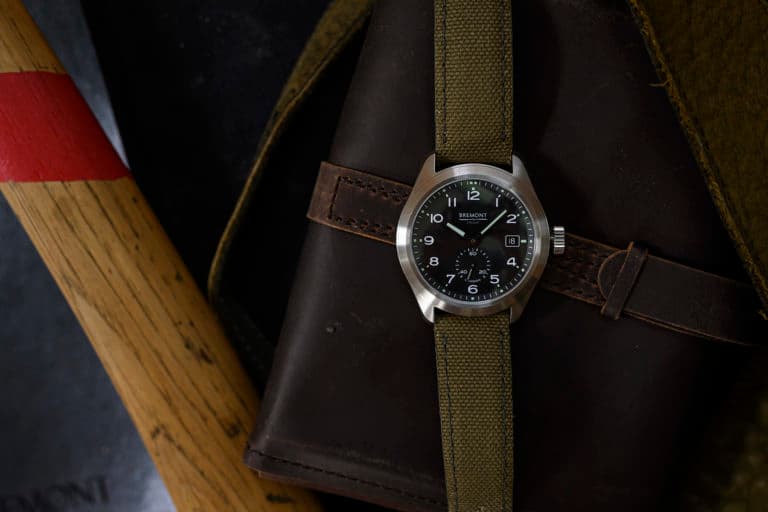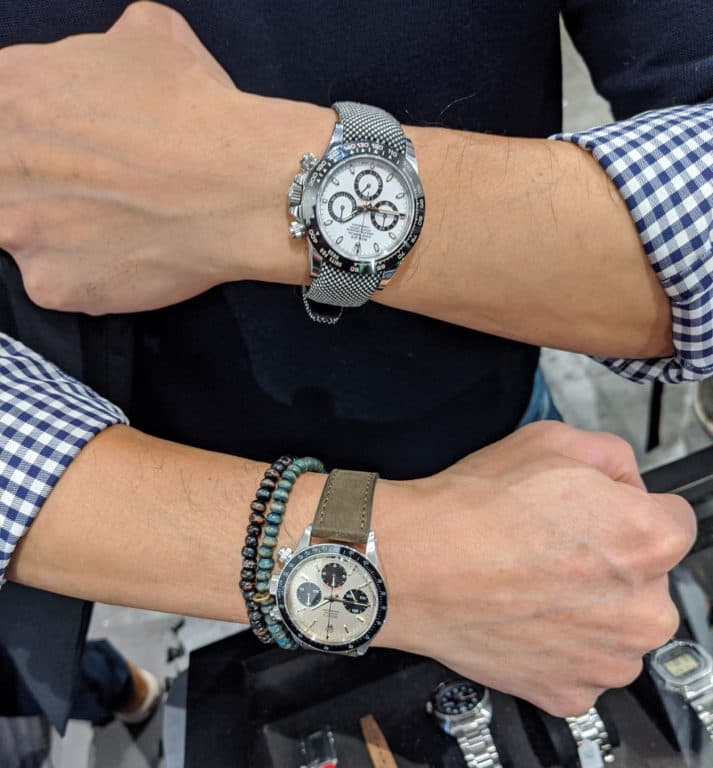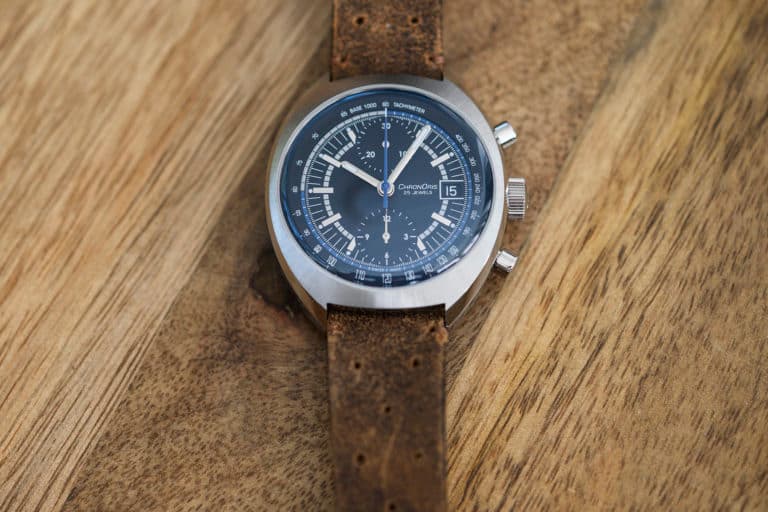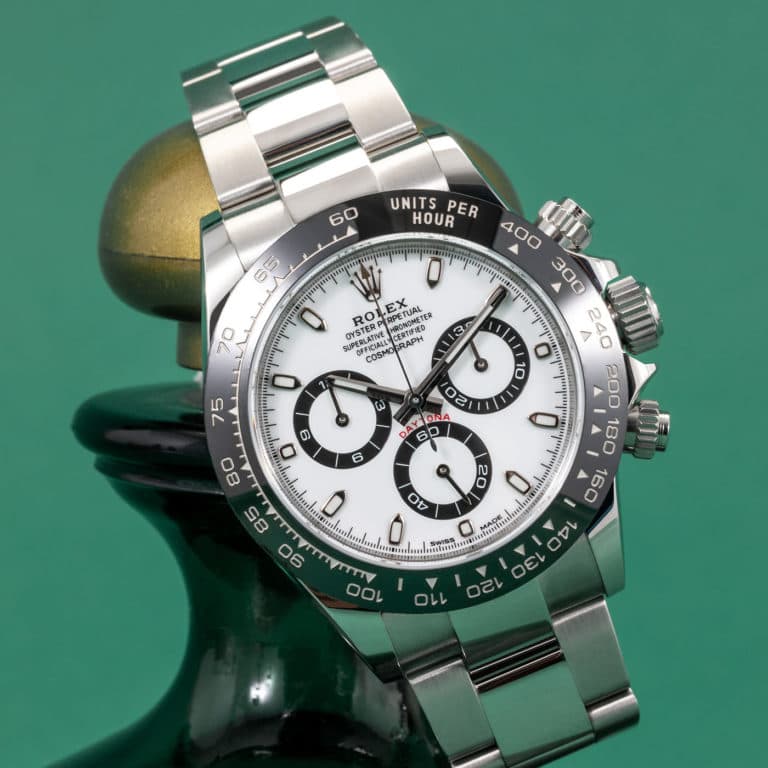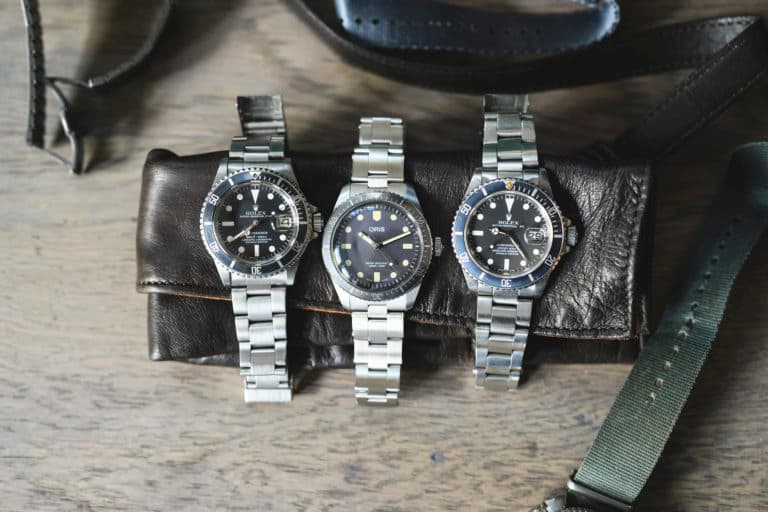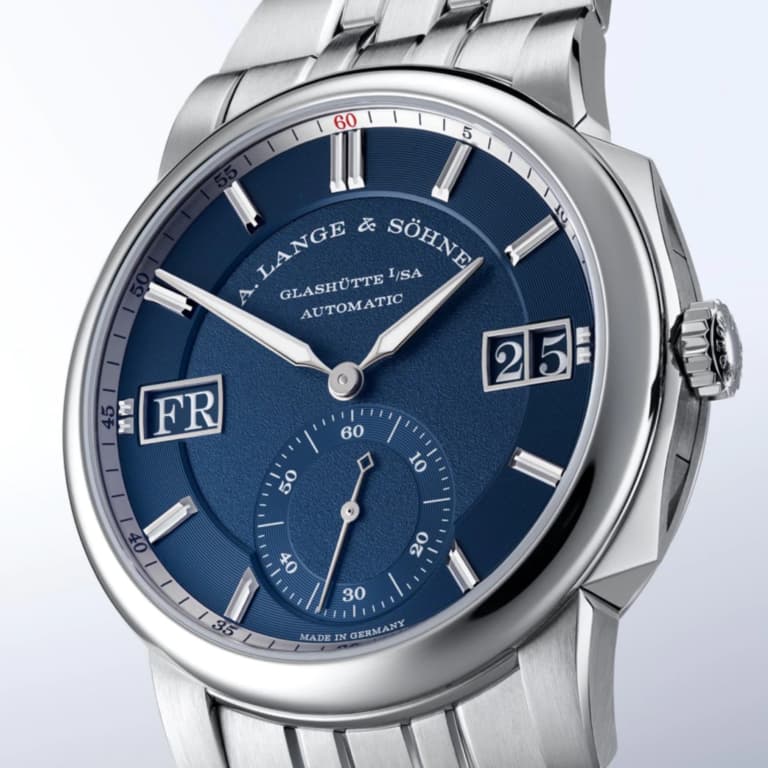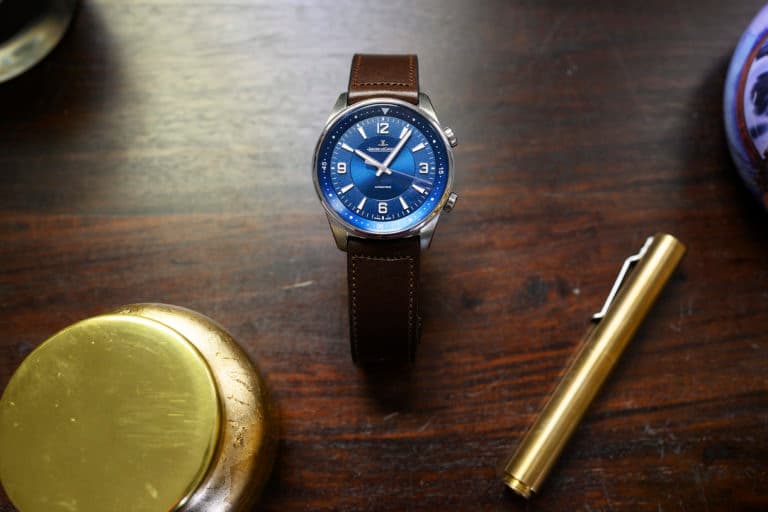The 1950s saw the rise of the Jet Age, a period in which commercial air travel was transformed by the use of turbine engines, allowing more people than any other point in history, access to continental and intercontinental travel. Early in the decade, while developing their (briefly) iconic WorldPort at New York’s JFK airport, PanAm made a request of Rolex to create a watch which would accommodate their expanding fleet of pilots on their time zone hopping routes. In 1954, Rolex delivered the GMT Master, a watch that would go on to define a genre, and even the nomenclature around it.
The first GMT Master, ref. 6542, was a simple solution to track a second time zone, but effective enough that’s it’s still widely used to this day. Rolex started with a regular Turn-O-Graph (ref. 6202) and added a fourth hand that moved at half the speed of the hour hand, thus traversing the dial once every 24 hours. To track that 4th hand, Rolex applied a rotating 24-hour bezel, blue on the top, red on the bottom to quickly differentiate night and day. The 6542 GMT Master was in production until 1959, at which point it was replaced by the more robust ref. 1675, which replaced the famously fragile bakelite bezel, and tiny arrow at the tip of the 24-hour hand. Consequently, all-original 6542 GMTs are highly sought after by collectors.
So why call it the GMT Master? In the 50’s, Greenwich Mean Time was still the gold standard in keeping the mean solar time (called Greenwich due to the Royal Observatory’s location in London). As part of their navigation and communication protocols, pilots (then and now) operate on GMT time to eliminate ambiguity. The “Master” bit signifies that syncing across time zones.
Of course, Earth does not travel around the Sun at an even speed and tilt, so noon GMT is rarely the exact moment the sun crosses the Greenwich meridian (hence the “Mean” in GMT). Today we use Coordinated Universal Time (UTC), which is based on International Atomic Time, and allows for far fewer errors when it comes to precise and accurate timekeeping. UTC was widely adopted in the mid 60’s but such was the power of Rolex’s naming convention that the terminology stuck, and to this day the watch is called GMT Master (II).
While Rolex popularized the GMT, the complication itself is not unique to them. Many other brands offer the basic functionality of a 24 hour hand, and the goal of measuring two time zones simultaneously has evolved into a myriad of applications, from 24 hour hands at their simplest, to separate subdials featuring their own sets of hour and minute hands that can be set independently (such as the LM1 from MB&F).
The Rolex GMT Master is still perhaps most often associated with the complication, and this is thanks to the original colors of the bezel, the blue and red halves that quickly drew the nickname of “Pepsi” – and subsequent colorways such as red and black, blue and black, brown and gold, each donning their own alter ego (explore them here). However, the Pepsi bezel has become an icon, instantly recognizable for what it is, and is still present in Rolex’s GMT Master II family of watches (albeit, only available in white gold). Earlier references can still be found in steel (such as this example), while other options from other brands provide a fresh take on the this simple, but ultimately useful complication.


